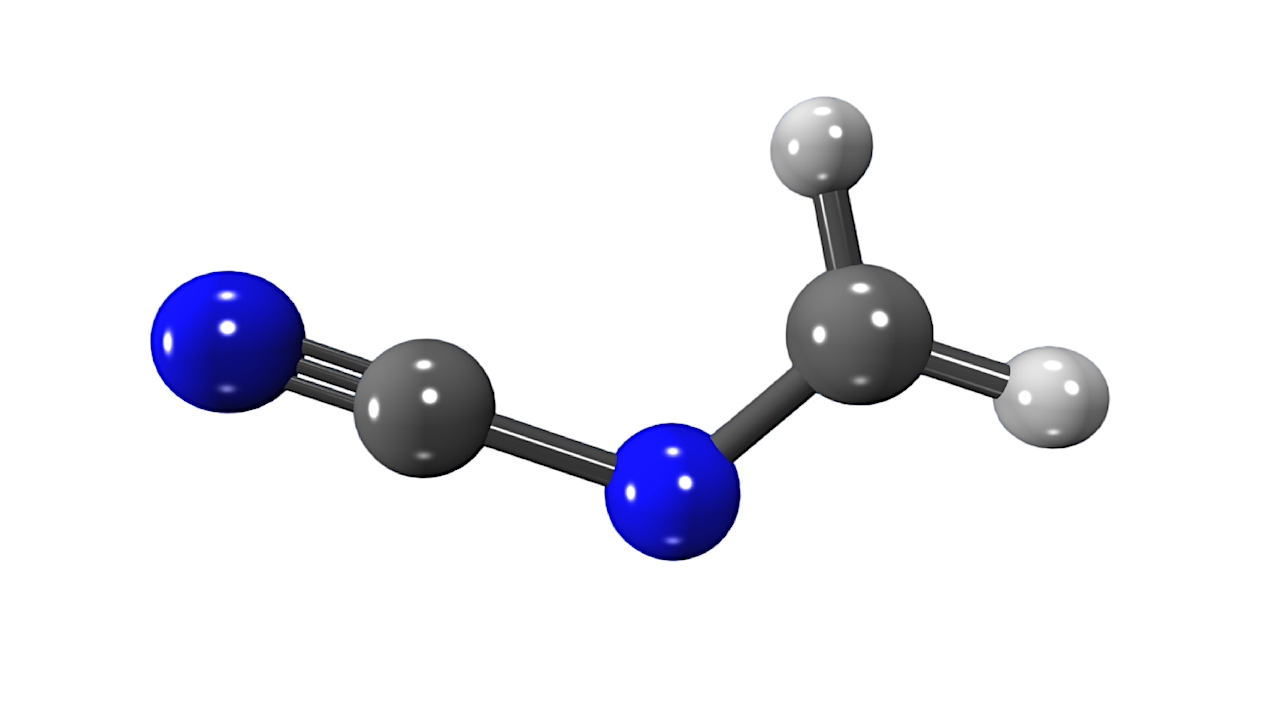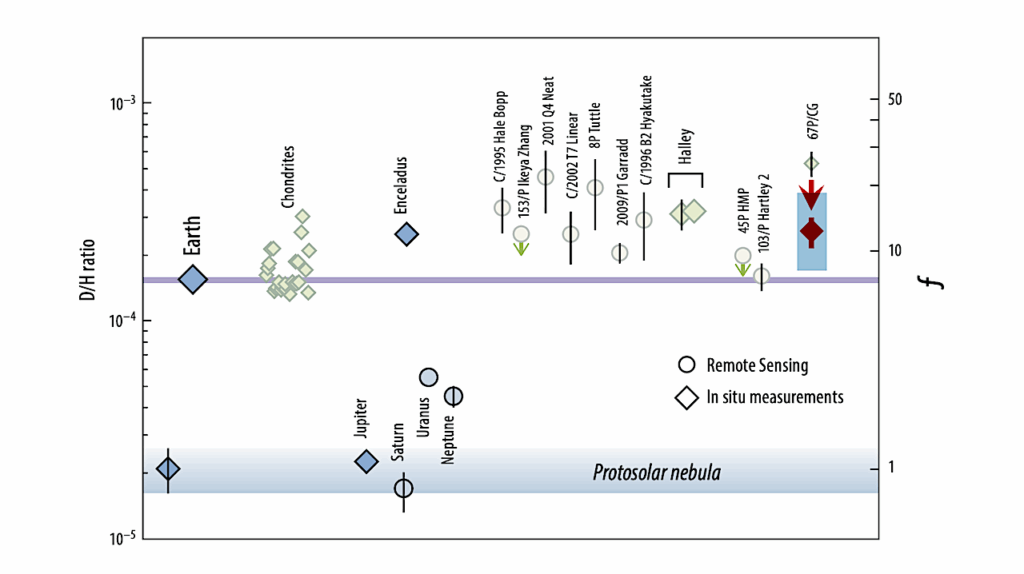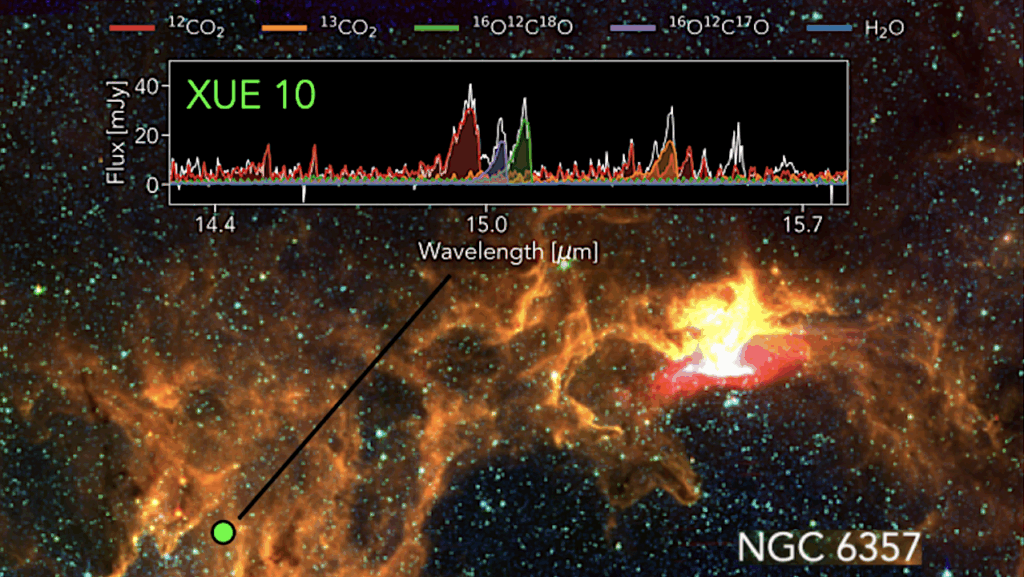First Detection in Space of the High-energy Isomer of Cyanomethanimine: H2CNCN

We report the first detection in the interstellar medium of N-cyanomethanimine (H2CNCN), the stable dimer of HCN of highest energy, and the most complex organic molecule identified in space containing the prebiotically relevant NCN backbone.
We have identified a plethora of a-type rotational transitions with 3 ≤Jup≤ 11 and Ka≤ 2 that belong to this species towards the Galactic Center G+0.693-0.027 molecular cloud, the only interstellar source showing the three cyanomethanimine isomers (including the Z- and E- isomers of C-cyanomethanimine, HNCHCN).
We have derived a total column density for H2CNCN of (2.9±0.1)×1012 cm−2, which translates into a total molecular abundance with respect to H2 of (2.1±0.3)×10−11. We have also revisited the previous detection of E- and Z-HNCHCN, and found a total C/N-cyanomethanimine abundance ratio of 31.8±1.8 and a Z/E-HNCHCN ratio of 4.5±0.2.
While the latter can be explained on the basis of thermodynamic equilibrium, chemical kinetics are more likely responsible for the observed C/N-cyanomethanimine abundance ratio, where the gas-phase reaction between methanimine (CH2NH) and the cyanogen radical (CN) arises as the primary formation route.
David San Andrés (1), Víctor M. Rivilla (1), Laura Colzi (1), Izaskun Jiménez-Serra (1), Jesús Martín-Pintado (1), Andrés Megías (1), Álvaro López-Gallifa (1), Antonio Martínez-Henares (1), Sarah Massalkhi (1), Shaoshan Zeng (2), Miguel Sanz-Novo (1 and 3), Belén Tercero (4 and 5), Pablo de Vicente (5), Sergio Martín (6 and 7), Miguel A. Requena-Torres (8), Germán Molpeceres (9), Juan García de la Concepción (10 and 11) ((1) Centro de Astrobiología (CAB), INTA-CSIC, Torrejón de Ardoz, Madrid, Spain, (2) Star and Planet Formation Laboratory, Cluster for Pioneering Research, RIKEN, Hirosawa, Wako, Saitama, Japan, (3) Computational Chemistry Group, Departamento de Química Física y Química Inorgánica, Universidad de Valladolid, Valladolid, Spain, (4) Observatorio Astronómico Nacional (OAN-IGN), Madrid, Spain, (5) Observatorio de Yebes (OY-IGN), Cerro de la Palera SN, Yebes, Guadalajara, Spain, (6) European Southern Observatory, Vitacura, Santiago, Chile, (7) Joint ALMA Observatory, Vitacura, Santiago, Chile, (8) Department of Physics, Astronomy and Geosciences, Towson University, Towson, USA, (9) Department of Astronomy, Graduate School of Science, The University of Tokyo, Tokyo, Japan, (10) Departamento de Química Orgánica e Inorgánica, Facultad de Ciencias, Universidad de Extremadura, Badajoz, Spain, (11) IACYS-Unidad de Química Verde y Desarrollo Sostenible, Facultad de Ciencias, Universidad de Extremadura, Badajoz, Spain)
Comments: 22 pages, 8 figures, 3 tables, 2 appendix – Accepted for publication in The Astrophysical Journal
Subjects: Astrophysics of Galaxies (astro-ph.GA)
Cite as: arXiv:2404.03334 [astro-ph.GA] (or arXiv:2404.03334v1 [astro-ph.GA] for this version)
Submission history
From: David San Andrés
[v1] Thu, 4 Apr 2024 10:02:18 UTC (1,778 KB)
https://arxiv.org/abs/2404.03334
Astrobiology, Astrochemistry,








